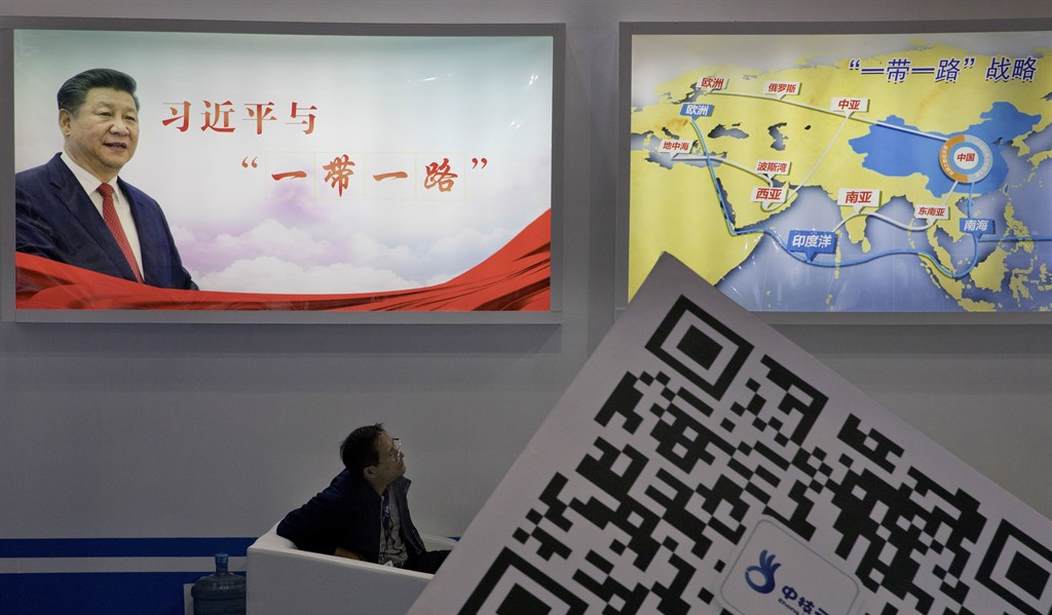With new attention FINALLY focused on Communist China, which is the REAL existential threat to the United States, it is time to reexamine their various plans and activities worldwide with a jaundiced eye. This is the first of a series of analyses of those ongoing plans.
Let’s start with this old article from the New York Times (at least most of their straight news is still readable) that paints the picture of China’s expansion beyond their borders before the Trump push-back got into gear:
The four-lane highway leading out of the Sri Lankan town of Hambantota gets so little traffic that it sometimes attracts more wild elephants than automobiles. … It links together a series of white elephants, i.e. boondoggles, built and financed by the Chinese. Beyond the lonely highway itself, there is a 35,000-seat cricket stadium, an almost vacant $1.5 billion deepwater port and, 16 miles inland, a $209 million jewel known as “the world’s emptiest international airport.” Mattala Rajapaksa International Airport, the second-largest in Sri Lanka, is designed to handle a million passengers per year.
As the United States beats a haphazard retreat from the world — nixing trade agreements, eschewing diplomacy, antagonizing allies — China marches on with its unabashedly ambitious global-expansion program known as One Belt, One Road. The branding is awkward: “Belt” refers to the land-bound trading route through Central Asia and Europe, while “Road,” confusingly, stands for the maritime route stretching from Southeast Asia across the Indian Ocean to the Middle East, Africa and Europe. Still, the intentions are clear: With a lending and acquisitions blitz extending to 68 countries (and counting), OBOR seeks to create the ports, roads and rail and telecommunications links for a modern-day Silk Road — with all paths leading to China.
This is China’s long game. It’s not about immediate profits; infrastructure projects are a bad way to make money. So why is President Xi Jinping fast-tracking OBOR projects amid an economic slowdown at home and a crackdown on other overseas acquisitions? Economics is a big part: China wants to secure access to key resources, export its idle industrial capacity, even tilt the world order in its favor. But there is also a far greater cultural ambition. For centuries, Western liberalism has ruled the world. The Chinese believe their time has come. “China sees itself as a great civilization that needs to regain its status as leader of the world,” says Kadira Pethiyagoda, a fellow at the Brookings Institution Doha Center. “And America’s retreat gives China the space to do that.”
This was precisely the Chinese view in 2017 before President Trump gave them a rude awakening. Thanks to America’s retreat up to that point, as implemented through Obama’s “manage the decline” nonsense, the ChiComs indeed “believed their time had come.”
This article revealed the beginning of global communism, Chinese-style. It was one red flag among many that the Obama regime and other neoliberal globalists willfully ignored. Placing a huge debt upon a nation like Sri Lanka that is struggling to recoup after a long and devastating civil war is a typical Communist Chinese blow of the first order. And a foot placed firmly in the door for control of the Indian Ocean when control of the new facilities is ceded to the Chinese in order to pay back the investment debt.
But are these Chinese investments merely sleight of hand (“watch Xi Jinping’s hands”)? He (and the Chinese Communist Party Central Committee) distract with dazzling projects while stealing the chestnuts. Watch as the People’s Liberation Army-Navy (PLAN) makes a base in Sri Lanka in the years to come. Just as China already has at Jiwani, Pakistan, adjacent to the Pakistani port city of Gwadar, and in Djibouti in close proximity to the United States Naval Expeditionary Base at Camp Lemonnier, which is located to Djibouti–Ambouli International Airport in Djibouti City. That US base just happens to be home to the Combined Joint Task Force – Horn of Africa of the U.S. Africa Command.
These new ChiCom facilities are meant to protect the maritime portion of the Chinese New Silk Road.
Announced in 2013 by President Xi Jinping, a brand new double trade corridor is set to reopen channels between China and its neighbours in the west: most notably Central Asia, the Middle East and Europe.
According to the Belt and Road Action Plan released in 2015, the initiative will encompass land routes (the “Belt”) and maritime routes (the “Road”) with the goal of improving trade relationships in the region primarily through infrastructure investments.
The aim of the $900 billion scheme … is to kindle a “new era of globalization”, a golden age of commerce that will benefit all. Beijing says it will ultimately lend as much as $8 trillion for infrastructure in 68 countries. That adds up to as much as 65% of the global population and a third of global GDP.
The sentence above was unfinished; it should have read “…a golden age of commerce that will benefit all Chinese.” Were you aware that the Chinese yuan is already legal tender in Gwadar, Pakistan? The Chinese are there for the long haul. And the 10,000 Chinese troops that are in Djibouti under the guise of “anti-piracy” operations? More Chinese sleight-of-hand.
Understand that the New Silk Road is not a single route but is planned and being built in some cases as a web, or a network, of land and maritime routes throughout the world. Planning even is underway and some under construction through Panama and Nicaragua into the US “lake” – the Caribbean Sea. A sea route through the Russian Arctic is even a planned possibility! A railroad from Port Sudan clear across Africa to Dakar, Senegal, will provide an anchor for a network to reap the natural resources that are relatively untapped throughout the African continent. A Mediterranean port might be in the offing in Algeria, too, linked with a rail net through the Sahel and Sahara.
Chinese eyes have been coveting Mediterranean ports in southern Europe, too. This explains why Italy and Spain are hard hit with Wuhan virus, doesn’t it?
The list of ports China has invested in, or planned to invest in, may be one of the answers: there is great diversity, between Piraeus, the new ‘three Seas’ initiative, ventures in Italy and Spain (the articles do not mention that Slovenia turned down several Chinese projects), and a major but little heard of project on the Algerian coast.
Europe is the end destination for China’s Belt and Road Initiative (BRI), so it is imperative to understand the developments that are taking its southern branch, the 21st Century Maritime Silk Road (MSR), from concept to reality.
Four foreign sources provide more than the pap of the legacy media regarding China’s plans and activities beyond their borders: Xinhua, the English version of the official Chinese news; the New Delhi Times; the South China Morning Post, and the Indian Express. Many of the stories in those media cannot be independently verified, so we must always hedge with “it is reported” or “according to” or some other modifier. Still, those outlets provide a unique perspective that rarely gets examined in American media. Xinhua gives the official ChiCom position, SCMP provides the view from Hong Kong and Singapore, and the other two provide the Indian perspective (India and China being old enemies).
Even in the heat of the Wuhan virus pandemic, the Chinese march inexorably toward world economic domination, and most Americans are clueless of that fact. They are more interested in pop culture, cheap Chinese-manufactured goods, and the bread-and-circuses nonsense being fed to them by the American political class in Washington, DC, than they are about faraway China.
Pretend that it’s 2120 A.D. and contemplate what the geopolitical world might look like. By then, the world’s population may approach 12 billion souls. Consider the case of the Philippines as a growth example. In 1945, the Philippines’ population was a paltry 16 million. By 2016, the official estimate was 106-million. Anyone who has visited the outlying provinces or even metro Manila has seen housing expand outwardly along provincial roadways one or two houses deep. The arable land must not be used for housing or the Filipinos will have no rice or vegetables! As in other Asian nations with burgeoning numbers, the only way left to house the overpopulation is up as in Hong Kong and Shanghai. Consider the picture of Hong Kong high-rises at this link! Extrapolate this growth, and reaching 12 billion is entirely possible.
By 2120, America will be isolated from most international trade by the Communist Chinese who will have completed their New Silk Road. Except that there is a guy in the Oval Office who is putting a crimp in their plans – at least for the time being. Will he be but a speed bump for the ChiComs, or will the Trump Revolution carry on and turn the Chinese overseas flow into a long-term ebb tide?
The November 2020 election will determine if Americans have finally been awakened to the ChiCom threat – or not!
The end.
[H/T: a 95-year-old Navy master chief]













